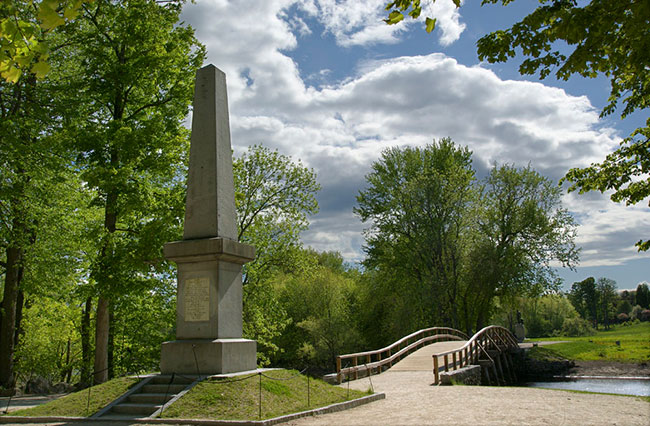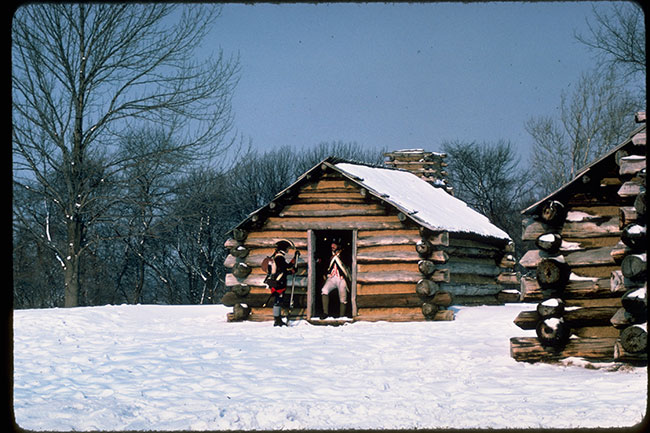It was a weekend of many things—a race through every lit hour, the mind awake at 2 AM, the body running (again) two hours on.
Don't forget. Do. Go. Then, mid-afternoon, today, I was walking back to the car, having taken a very tiny Italian pine tree to my mother's grave. Having reset the wreathe my father had planted there. Having had a quiet conversation.
I had parked, deliberately, at a distance. I had wanted not to hurry through this visit with my mother at Christmas. She has been gone eight years. We talk, still.
It's easy to think of winter as leaching the color from things. Today, returning to the car, less speed in me, more calm, I stopped to see how winter is (in fact) its own quite perfect palette.
As Eula Bliss makes headlines with her new examination of vaccines and social inoculation,
On Immunity, I have been reading her first book, an exquisite inversion of the memoir form. Released in 2002 by Hanging Loose Press,
The Balloonists is a patchwork of impressions and inquiries about marriage. The kind of marriage the author's parents had. The kind the author contemplates on her own. In between, declarations of impossibility.
For example:
"At some point," my mother tells me, "you realize that your parents are not who you thought they were. You realize that they are something separate from what you have made out of them." She tells me this because she knows that I have been writing about her. It is what she says instead of saying, "You don't know me."
"For example," she says, "my sister always felt that our father didn't like her. Of course he liked her, he just didn't understand how to show that he liked her. She didn't really have a father that didn't like her, but that doesn't change the fact that she had the experience of having a father who didn't like her." My mother is telling me that I am not a liar, but that she is not what I write about her.
I took these photos yesterday while walking Valley Forge National Historical Park with my friend, the amazing writer (
Badlands) and teacher, Cyndi Reeves. Over four point five miles (Cyndi tells me), the conversation ranged from Krakow to Siena to the architectural form of stories to the autobiographical possibilities of fairy tales, and, in the final uphill climb, to Eula Bliss, whose
The Balloonists Cyndi had also read years before I discovered it.
I was out of breath on the hill. I was grateful beyond measure to have a friend like Cyndi to talk
The Balloonists with.
In 1996, Congress commissioned the National Park Service to compile a list of sites and landmarks that played a part in the American Revolution. From battlefields to encampments, meeting houses to museums, these places offer us a chance to rediscover the remarkable men and women who founded this nation and to recognize the relevance of not just what they did, but where they did it. Frances Kennedy, editor of The American Revolution: A Historical Guidebook, has compiled a list of her favorite places, and why.
1. Minute Man National Historical Park, Concord, Lincoln, and Lexington, Massachusetts
The American Revolution began years before the first battles of the Revolutionary War, fought at Lexington and Concord in April 1775. In 1765 Parliament passed the Stamp Act which imposed taxes on the colonies. After the colonists began protests, the British ordered soldiers to Boston. In April 1775, after the royal governor of Massachusetts learned that colonists were storing military supplies in Concord, he ordered British regulars to march from Boston to seize the supplies. They fired “the shot heard around the world”. Men on both sides were killed in Lexington and Concord; more British soldiers were killed on their march back to Boston by militiamen firing from behind walls and trees. The Historical Park includes the sites of the battles at Lexington Green and at North Bridge in Concord. In July, the Continental Congress named George Washington commander in chief of the Continental Army.

Minute Man National Park, Concord, MA by Jay Sullivan. CC-BY-SA-3.0 via Wikimedia Commons.
2. Boston National Historical Park, Dorchester Heights in South Boston, Massachusetts
In early March 1776, General Washington surprised the British forces occupying Boston by fortifying Dorchester Heights, the hills high above the ships in the harbor. He had received about 60 pieces of the artillery in late February after Colonel Henry Knox, formerly a Boston bookseller, had succeeded in dragging them across more than 200 miles of ice and snow from Fort Ticonderoga on Lake Champlain. Washington’s successful siege forced the British to evacuate Boston. They sailed out of the harbor on March 17 toward New York. The tall white marble monument on the Heights commemorates the siege.
3. Independence National Historical Park, Philadelphia, Pennsylvania

The clocktower at Independence Hall. Philadelphia, PA by Captain Albert E. Theberge, NOAA Corps (ret.) (NOAA Photo Library: amer0024). CC-BY-2.0 via Wikimedia Commons.
Great beginnings in America are commemorated in the Historical Park. In Carpenter’s Hall in 1774, delegates from twelve colonies — all except Georgia – met in the First Continental Congress, to consider how to respond to acts of Parliament that threatened their liberties. The State House of the Province of Pennsylvania, now Independence Hall, was the meeting place for the Second Continental Congress, beginning on May 10, 1775. In 1776, Thomas Jefferson wrote the Declaration of Independence, Congress edited it, and on July 4, Congress accepted it, in the same Hall. After the Articles of Confederation were ratified, the Confederation Congress met in the Hall until June 21, 1783. The Constitutional Convention met in the Hall in May-September 1787 and approved the Constitution on September 17.
4. Washington Crossing Historic Park, Washington Crossing, Pennsylvania
Washington crossed the Delaware River on Christmas night 1776 in a raging snowstorm and on the next day, he won the battle of Trenton, New Jersey. Henry Knox was in command of the crossing, the same officer who had dragged the artillery from Fort Ticonderoga for the successful siege of Boston. Among the men who managed the boats in the dangerous river crossing, amid floating cakes of ice, were the mariners in Colonel John Glover’s Massachusetts regiment, which included blacks, American Indians, and whites. The historic river crossing is commemorated in the two parks, one on each side of the river.
5. Saratoga National Historical Park, Stillwater, New York
In July 1777 General Burgoyne’s 8,000-man British army, which included German soldiers and American Indians, marched down the Hudson River Valley with the goal of splitting the states and isolating New England. Slowed by the dense forests and its long supply line, the army finally crossed the river in mid-September, won a costly victory against the Americans in the battle of Freeman’s Farm, fought another at Bemis Heights on October 7, and was forced by the American siege to surrender 6,800 soldiers on October 17. The Historical Park, along the Hudson River, includes the sites of the battles and the British camp.
6. Valley Forge National Historical Park, King of Prussia, Pennsylvania
The army barely survived the 1977-1978 winter in the Valley Forge camp. More than 2,000 soldiers died as a result of too little to eat and inadequate clothing. Conditions improved in March after Nathanael Greene was appointed quartermaster general. Baron von Steuben, a former Prussian officer commended to Washington by Benjamin Franklin, arrived at the camp in February and began a training regimen for the army. By June 1778 when the soldiers marched out of Valley Forge, they were better trained and more confident. The 5.4 square mile Historical Park includes historic buildings, sites of the brigade encampments, the historic trace road, monuments, and the camp defense lines.
7. Kings Mountain National Military Park, Blacksburg, South Carolina
In the fall of 1780, the patriots known as over-mountain men rode from their farms in Virginia, Tennessee, and North Carolina to battle British Major Patrick Ferguson and his command of loyalists. After riflemen from South Carolina joined the patriots, their force numbered about two thousand. On October 5, they attacked Ferguson’s camp, killed him and one-third of his force and captured about 650 loyalists in the hour-long battle. It was the first major patriot victory after the British capture of Charleston the previous May. The Military Park includes the battle site, monuments, and Ferguson’s grave. The Overmountain Victory National Historic Trail commemorates the patriots’ routes (on today’s maps).
8. Cowpens National Battlefield, Gaffney, South Carolina
Cowpens, a pastureland in South Carolina, is the site of General Daniel Morgan’s attack on Lieutenant Colonel Banastre Tarleton’s British Legion on January 17, 1781. Called a tactical masterpiece, Morgan’s battle plan began with militia sharpshooters who fired two volleys, then fell back behind the Continentals who next attacked, followed by the cavalry. In less than an hour, the British suffered nearly 1,000 casualties, including about 500 captured. Tarleton escaped and rode to General Cornwallis to report the bad news. The 845-acre park includes the battlefield and monuments.
9. Guilford Courthouse National Military Park, Greensboro, North Carolina
In the small community of Guilford Courthouse, General Nathanael Greene used General Morgan’s Cowpens tactics to battle General Cornwallis on March 15, 1781. Cornwallis won the battle over Greene’s militia and Continentals, but his force suffered such heavy casualties that he was left with only about 1,500 soldiers able to fight. He retreated to the coast and made his decision to march north to join the British force in Virginia. The Military Park includes the battlefield and monuments.
10. Colonial National Historical Park, Yorktown, Virginia
In May 1781, General Cornwallis took command of the British soldiers in Virginia and waited for reinforcements to arrive from General Henry Clinton in New York. In mid-August, General Washington and the Comte de Rochambeau, in command of the French army in America, began their march south after learning that the French fleet was sailing for the Chesapeake Bay. On September 5 the French defeated the British fleet in a battle in the Atlantic Ocean off the Bay. Cornwallis could not be reinforced. By September 26 the American and French armies had arrived at Yorktown with about 18,000 soldiers and put Cornwallis’s 5,500-man force under siege. On October 19, Cornwallis surrendered, ending the last major battle of the Revolutionary War. The Historical Park includes Historic Jamestowne in Jamestown and the Yorktown Battlefield in Yorktown. The Washington-Rochambeau Revolutionary Route National Historic Trail commemorates the route (on today’s maps) taken by the two armies, the French from Rhode Island and both south from New York.
Frances H. Kennedy is a conservationist and historian. Her books include The Civil War Battlefield Guide, American Indian Places, and, most recently, The American Revolution: A Historical Guidebook.
Subscribe to the OUPblog via email or RSS.
Subscribe to only American history articles on the OUPblog via email or RSS.
The post The top 10 historic places from the American Revolution appeared first on OUPblog.









